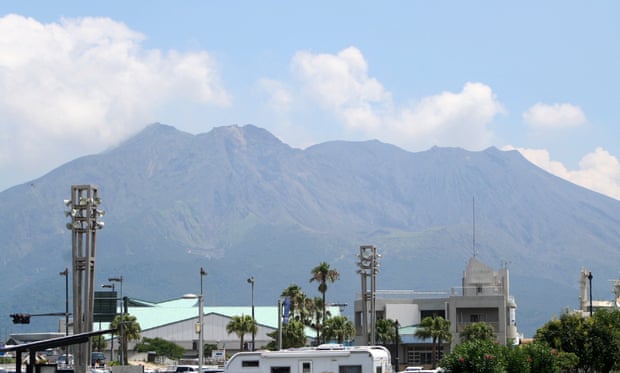The volcano is about 50 kilometres (31 miles) from a nuclear reactor that was switched on this week, as Japan restarted its nuclear power programme
What could go possibly wrong?
Sakurajima volcano: chance of large eruption 'extremely high'
What could go possibly wrong?
Sakurajima volcano: chance of large eruption 'extremely high'
Japan
raises eruption warning for southern volcano to second-highest level
and tells thousands of residents to prepare for a possible
evacuation


15
August, 2015
Japan’s
weather agency on Saturday told thousands of residents near a
southern city to prepare for a possible evacuation as it upgraded a
volcanic eruption warning.
Officials
raised their alert to its second-highest level after picking up
increasing seismic activity around the volcano Sakurajima, which sits
just off the coast of Kagoshima, a city of more than 600,000 people.
Activity
has spiked since Saturday morning, they said.
The
volcano is about 50 kilometres (31 miles) from a nuclear reactor that
was switched on this week, as Japan restarted
its nuclear power programme
following the 2011 Fukushima crisis when a quake-sparked tsunami set
off reactor meltdowns at the now-crippled site.
Critics
have said the restarted reactor at Sendai was still at risk from
natural disasters.
“The
possibility for a large-scale eruption has become extremely high for
Sakurajima,” the agency said, warning residents to exercise “strict
caution” and prepare for a possible evacuation. The warning applies
to a part of the island, which is home to more than 4,000 people.
The
last major eruption at the 1,117-metre-high Sakurajima – a popular
tourist attraction – was in 2013 when it spewed ash as far as
Kagoshima and sent rocks flying into populated areas, causing damage
but no major injuries.
There
are scores of active volcanoes in Japan,
which sits on the so-called “ring of fire”, where a large
proportion of the world’s quakes and eruptions are recorded.
In
June, search teams returned to the peak of Mount Ontake in central
Nagano prefecture for the first time in eight months to look for the
bodies of six climbers still missing after an eruption
that killed dozens.
The
shock eruption was Japan’s deadliest for almost 90 years, leaving
an estimated 63 people dead, many of their bodies at least partially
entombed in volcanic sludge.



No comments:
Post a Comment
Note: only a member of this blog may post a comment.